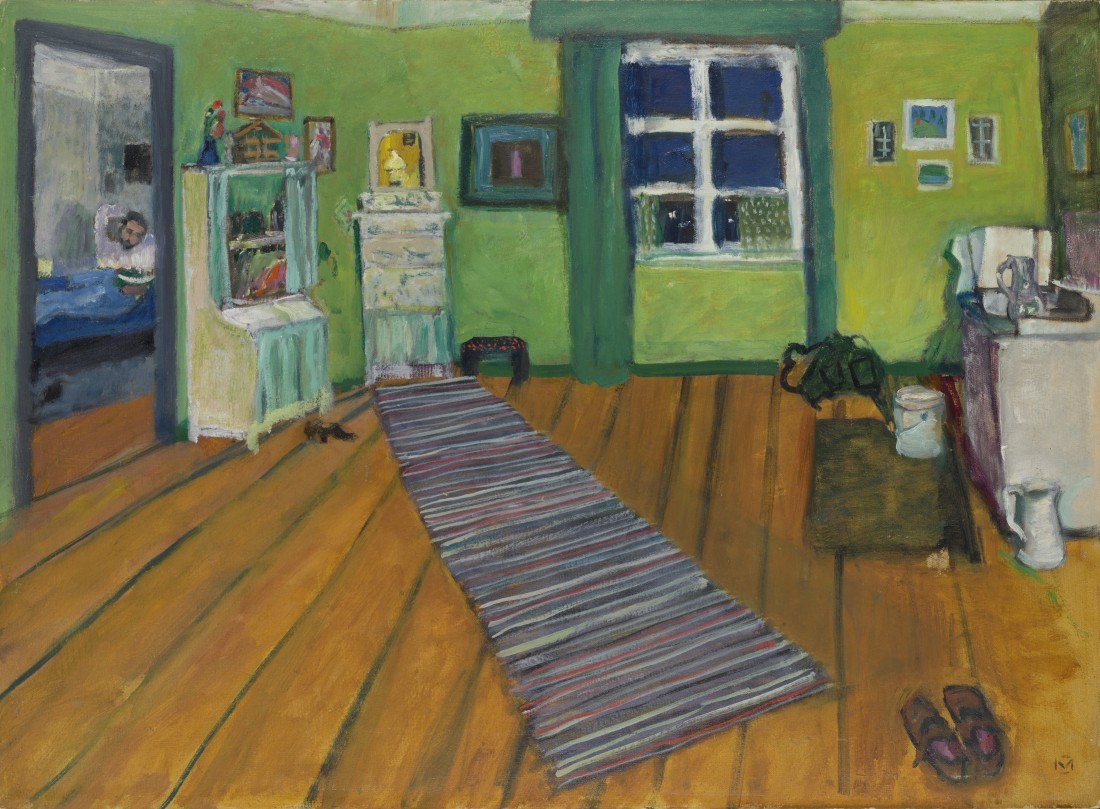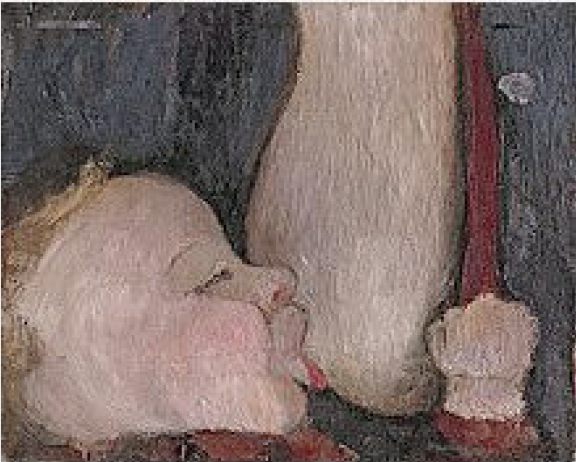“Making Modernism”
In the histories of European modernism, the art of France has long been privileged. You need only set Adolph Menzel against the impressionists and post-impressionists, or the German expressionists alongside Henri Matisse and Pablo Picasso (an honorary Frenchman) to understand that comparative value judgment. Prior to World War One in Germany, there were a number of strong female artists, more, perhaps, than in France. “Making Modernism” presents 65 works by them. It focuses on Paula Modersohn-Becker, Käthe Kollwitz, Gabriele Münter and Marianne von Werefkin. (Also included are works by Erma Bossi, Ottilie Reylaender and Jacoba van Heemskerck, too few to allow confident judgments about the status of these lesser known artists.) These middle-class women, all born in the late 19th century and trained in art school, deal with some similar subjects— children, lovers and female nudes, for example. Modersohn-Becker’s Hands with chamomile flower, 1902, shows the hands tenderly embracing the flower; Käthe Kollwitz’s Lovers Nestling Against Each Other, 1909–10, a wonderful large drawing, shows a man and woman embracing; Gabriele Münter’s Interior in Murnau, 1910, depicts in expansive perspective a kitchen with marvellous green walls; and Marianne von Werefkin’s Twins, 1909, shows two women, both dressed almost entirely in black, holding sleeping babies with turquoise- coloured faces, swaddled in white blankets.

Gabriele Münter, Interior in Murnau, 1909–10, oil on cardboard, 50.6 × 69.3 centimetres. Courtesy Gabriele Münter- und Johannes Eichner-Stiftung, München. © Gabriele Münter Estate/ Bild-Kunst Bonn/CARCC Ottawa 2023.
These women had very varied careers. Modersohn-Becker died tragically young, at 31, from complications of childbirth, while Kollwitz, who became a veteran political activist, famous for her lithographs, was dismissed by the Nazis from her professorship at the Prussian Academy of Arts but survived until spring 1945. Münter, who for a time was Wassily Kandinsky’s partner, saved many ‘degenerate’ paintings from the Third Reich, and herself lived until 1962. And von Werefkin, who worked for a time with Alexej von Jawlensky, moved in 1922 to Switzerland, where she died in 1938. Major figures who were well integrated into the contemporary expressionist art world, all four of them formed individual styles and created bodies of substantial works. A most instructive dialogue by British painter Chantal Joffe with Dorothy Price, Courtauld professor of art history, published in the catalogue, provides a vivid contemporary perspective on their important historical role.

Paula Modersohn- Becker, Baby on his mother’s breast, circa 1904, oil on canvas, 23.4 × 28.2 centimetres. Photo: Landemuseum Hannover— Artothek.
The softly coloured small paintings of Modersohn-Becker can be contrasted with the more varied subjects of Münter. Particularly impressive are Modersohn-Becker’s close-ups of people, her Cat in a Child’s Arm, 1903, for example, and the Infant, Breastfeeding, 1904, in which a child, eyes almost closed, suckles. His lips closed on the nipple, only the pinkish coloured highlights on his face distinguish his body from his mother’s breast, while the scene all around him is almost pure black. I’ve never seen a better possible cover illustration for Sigmund Freud’s Three Essays on the Theory of Sexuality, 1905, with his claim that in nursing, ingesting the life-giving milk and oral pleasure are bound together. Often, Modersohn-Becker’s children are given visual autonomy, with real identities of their own. Mother with Child on her Arm, Nude II, 1906, is a good example. Here, however, we see that happily perfect unity of child and mother that is soon to be disrupted. There are many Old Master Madonnas that show Christ at the Holy Virgin’s breast, but I know of no close frame like this astonishing original, extremely tender painting. Were I told that Infant, Breastfeeding was made this year, I would be unsurprised. Modersohn- Becker also did a striking Self-Portrait as a Standing Nude with Hat, 1906. “Strive for the greatest simplicity by means of the most intimate observation,” she wrote three years earlier: “This is greatness,” she rightly concluded in this note-perfect anticipation of her own later art. In the catalogue, Münter is photographed by Kandinsky holding her cat, 1906–07. And her portraits of him and Paul Klee, Man in an Armchair, 1913, are highly accomplished paintings. Still-life on the Tram (After Shopping), 1912, is an assemblage of packaged artifacts, held by a woman, a boldly cropped image of the products of a consumer economy. And Apples on the Wall, 1908, is a close-up of red apples on a purple background, an original composition. In the interview, Joffe, observing that “women touch death when they give birth,” says: “I want to hear from them!” This splendid exhibition achieves that result. ❚
“Making Modernism” was exhibited at the Royal Academy of Arts, London, from November 12, 2022, to February 12, 2023.
On wild art, see David Carrier and Joachim Pissarro, Wild Art (London: Phaidon, 2013) and Aesthetics of the Margins/The Margins of Aesthetics: Wild Art Explained (Pennsylvania: Penn State University Press, 2018). Carrier’s In Caravaggio’s Shadow: Naples as a Work of Art (2024) is forthcoming.

